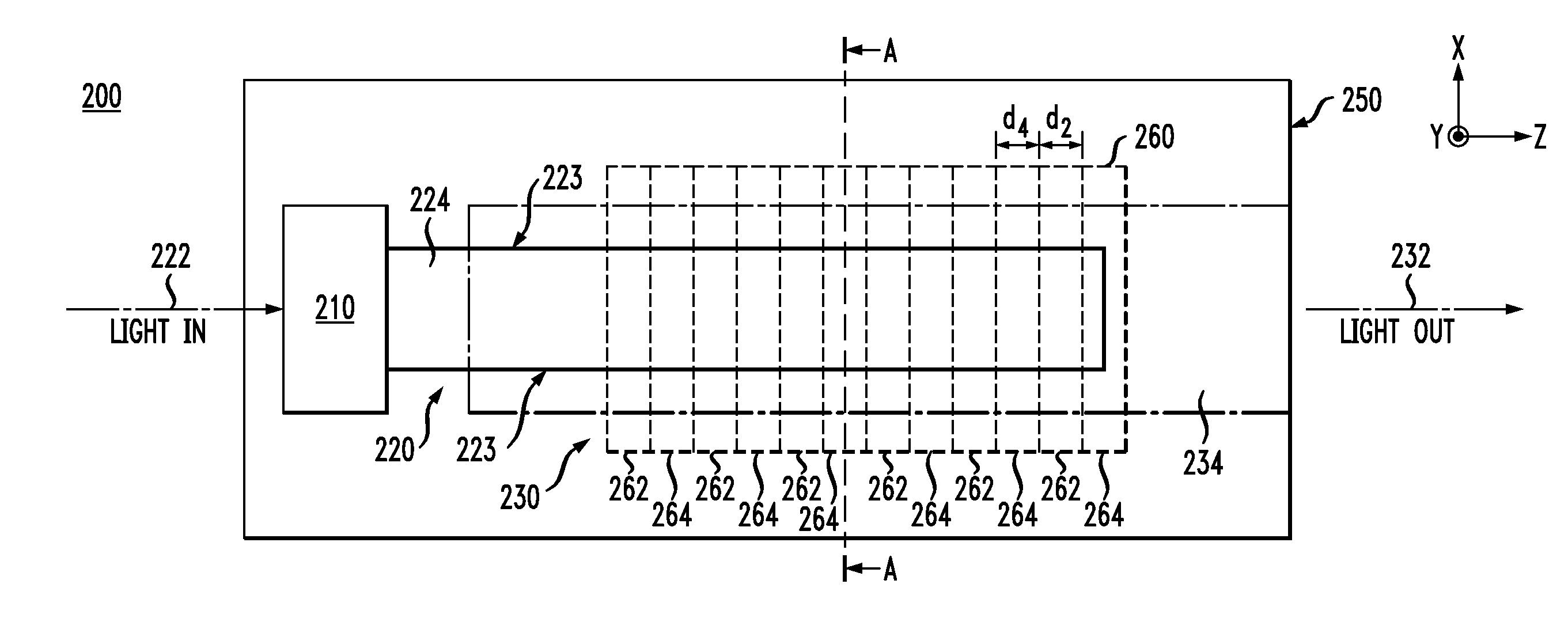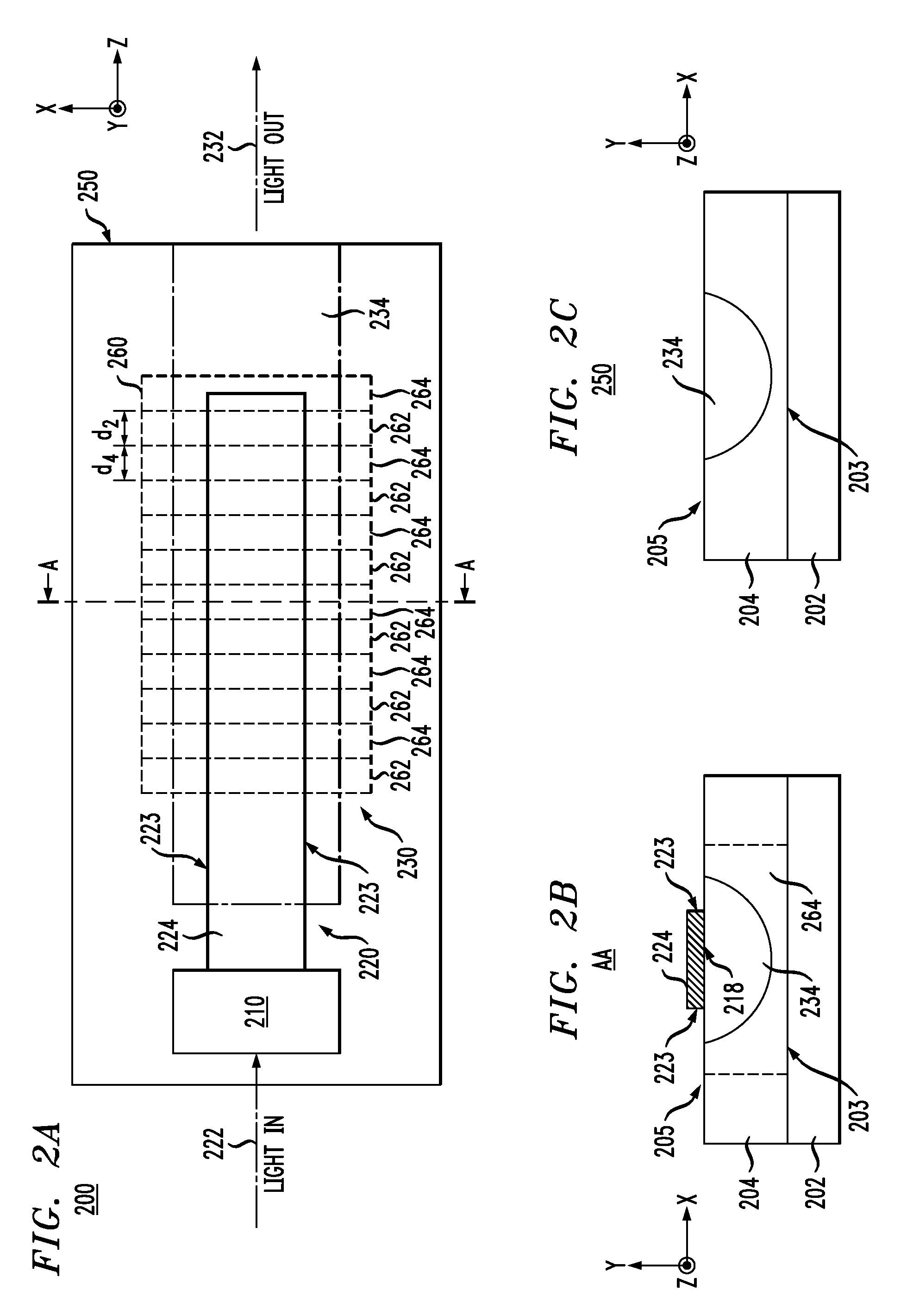Surface-plasmon-assisted optical frequency conversion
a surface plasmon and optical frequency conversion technology, applied in the direction of optical waveguide light guide, optical elements, instruments, etc., can solve the problems of limited choice of nonlinear optical materials suitable for use therein, and the power-conversion efficiency provided by those nonlinear optical materials might not be optimal, so as to facilitate efficient energy transfer and high power-conversion efficiency
- Summary
- Abstract
- Description
- Claims
- Application Information
AI Technical Summary
Benefits of technology
Problems solved by technology
Method used
Image
Examples
Embodiment Construction
[0014]FIG. 1 shows a block diagram of an optical generator 100 according to one embodiment of the invention. Generator 100 has light sources 1101 and 1102 that generate light beams 1121 and 1122 having optical frequencies ω1 and ω2, respectively. A beam combiner 120 combines beams 1121 and 1122 and directs a resulting combined beam 122 to an optical frequency (OF) converter 130. Converter 130 has a nonlinear optical medium (not explicitly shown in FIG. 1), where optical frequencies ω1 and ω2 of beam 122 interact to produce at least one additional optical frequency, which is labeled ω3. An output light beam 132 produced by converter 130 generally has the original frequencies ω1 and ω2 and at least one new frequency ω3. An (optional) optical filter 140 that receives light beam 132 from converter 130 transmits frequency ω3 while blocking the other optical frequencies contained in that light beam.
[0015]The relationship between frequencies ω1, ω2, and ω3 depends on the type of nonlinear ...
PUM
 Login to View More
Login to View More Abstract
Description
Claims
Application Information
 Login to View More
Login to View More - R&D
- Intellectual Property
- Life Sciences
- Materials
- Tech Scout
- Unparalleled Data Quality
- Higher Quality Content
- 60% Fewer Hallucinations
Browse by: Latest US Patents, China's latest patents, Technical Efficacy Thesaurus, Application Domain, Technology Topic, Popular Technical Reports.
© 2025 PatSnap. All rights reserved.Legal|Privacy policy|Modern Slavery Act Transparency Statement|Sitemap|About US| Contact US: help@patsnap.com



